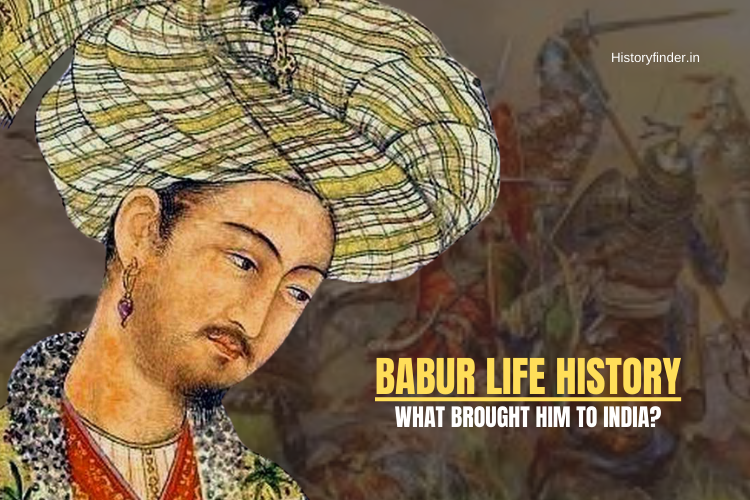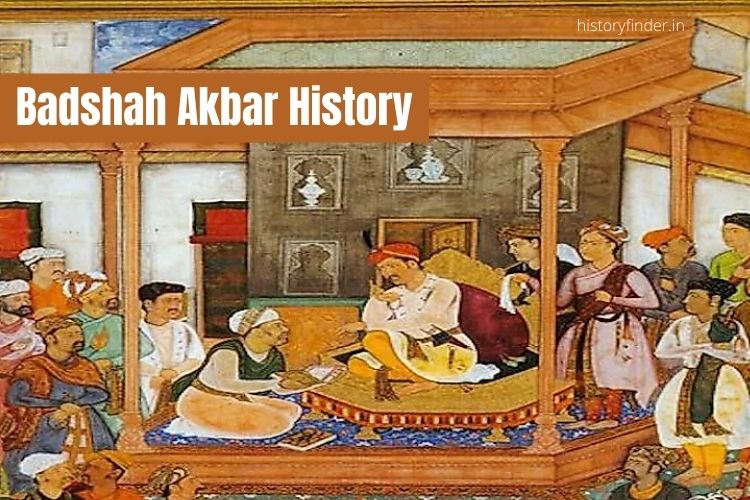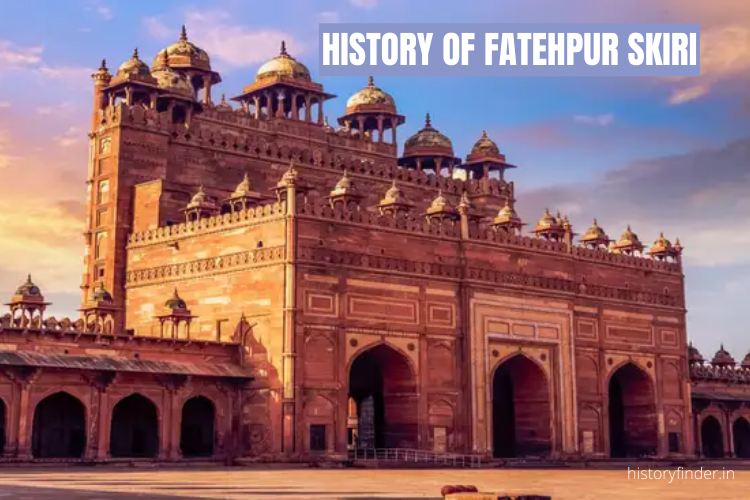Zahir ud-din Muhammad Babur is famous in Indian history as the founder of the glorious Mughal empire. Before establishing his empire in India, life story of Babur had been full of struggle and conquest. On one side he had been a remarkable leader and warrior. But on other the side, Babur left an incredible cultural legacy, by promoting Persian art, literature, and architecture in India.
Life history of Babur is divided into three parts. His early life history belong to Farghana, a small province of modern Uzbekistan. The second chapter in the life history of Babur elaborates his rule in Kabul and struggles in central Asia. Babur established his empire in India during last few years of his life only. Thus, how Babur established Mughal empire in India, is the most interesting part of his life history.
Sources of Information
The main source of information about the life history of Babur is his memoirs, Baburnama. It provides insights into Babur’s life, conquests, and the cultural landscape of his time. Baburnama is considered one of the most important Mughal manuscripts and the first true autobiography in Islamic literature.

Babur Early Life (1483-1504)
Babur was carrying the blood of two great warriors in his body. His father Umar Sheikh Mirza was the descendant of the great Turco-Mongol conqueror Timur. While Qutlugh Nigar Khanum, mother of Babur, was a descendant of Genghis Khan, the founder of Mongol empire. Babur born in Andizhan on 10th June 1483. During his childhood, Babur heard a lot of stories about Hindustan from his father.
Umar Sheikh Mirza died of a building collapse in 1494, leaving Babur to ascend the throne of Farghana.
During early rule of Babur, surrounding regions were often contested by local chieftains. It made the early life of Babur full of hostilities and struggles. Babur attempted to seize Samarkand, the capital of legendary Timur, quite a few times. But despite of several conquests, Babur failed to hold Samarkand for long. In the process, he also lost control of Samarkand often. Shaybani Khan, Uzbek leader and another descendant of Genghis Khan, was known for his arch-rivalry with Babur.
Reign of Kabul (1504-26)
After a long 10 years of struggle in Uzbekistan, Babur started looking for new opportunities. Mukin Begh captured Kabul removing the infant heir of Ulugh Beg, Babur’s paternal uncle. Babur conquered Kabul in 1504, defeating Mukin Begh. Babur ruled Kabul for 22 years. But during this period, Babur conducted several campaigns to regain Samarkand. But he couldn’t succeed to overpower Shaybani Khan.

Babur introduced Shahrukhi silver coins, the standard Timurid currency at Kabul. Shahrukhi coins consisted the Islamic invocation to Allah, the name of four Caliphs, minting town with date, and his name.
During his 20 years of reign at Kabul, Babur realized two things. Firstly, defeating Shaybani Khan had become a waste of time, wealth and efforts. Secondly, the mountainous city of Kabul won’t generate enough revenue to take up such costs anymore. So, small kingdoms of Hindustan and declining Delhi Sultanate under Ibrahim Lodi was worth taking a chance.
Invasions to India
Babur made several campaigns to northern India during his reign of Kabul. The main purpose of his India campaigns were to accumulate wealth initially. In Baburnama, Babur had mentioned about the valley of Khyber Pass, which he used to enter Hindustan. He crossed the Indus river in 1524. After few skirmishes there, Babur eventually moved towards Delhi, his primary destination.
Victory in the First Battle of Panipat (1526 CE), was a defining moment in life history of Babur. Modern artillery and firearms were used for the first time in the subcontinents, by Babur. It led his 12,000 men scattering and eventually overpowering 100,000 men army of Ibrahim Lodi.
Establishment of the Mughal Empire (1526–30 CE)
After defeating Ibrahim Lodi, Babur occupied Delhi and Agra. It led the foundation of the Mughal Empire in India. But his control over India was yet not secure, surrounded by several strong kingdoms, especially Mewar ruled by Rana Sanga. Babur defeated Rana Sanga in the Battle of Khanwa (1527 CE) to secure his new empire. Hence the Battle of Khanwa has equal importance to First Battle of Panipat in military career of Babur.
Babur next campaign was to Malwa, to isolate or remove Medini Rao and stop Rana Sanga renewing his strength. Once Medini Rao rejected Babur’s offer of Shamsabad, Babur launched an attack to Chanderi fort (1528 CE). The victory at the Battle of Chanderi secured Mughal empire from the Mewar and Malwa.
The unfamiliar climate of India caused Babur struggle a lot. His struggles further increased due to the disunity among his followers. In his memoirs, Babur often expressed his longing for the gardens and landscapes of his homeland.
Religious Policy in India
Babur couldn’t set up a unbiased religious policy in India, like his grandson Jalal ud-Din Akbar did. His four years of rule witnessed several religious violence across Mughal empire. The four hymns of Sikh Guru Nanak describes about Mughal-Sikh conflicts. Several Sikh accounts of early 16th century also express similar opinion. Many historians also claimed that the reason behind the transformation of Sikhism from pacifism to militancy was primarily religious violence.
Death and Legacy (1530 CE)
Babur died at Agra fort on 26th December, in 1530, at the age of 47. Although Babur died due to illness, a legendary story describes a father’s emotion as reason behind the death of Babur. The legend describes, Humayun feel seriously ill in 1530. When all efforts went in vein, Babur walked around Humayun’s bed seven times and make a prayer to Allah. In his prayer, Babur offered his life to Allah, in exchange with Humayun’s recovery. After Humayun recovered from his illness, Babur died shortly in an unknown illness. The sudden death of Babur made the story heart touching.
Babur was initially buried in Ram Bagh (formerly Aram Bagh) in Agra. But was later reburied in Kabul, his true homeland. Bagh-e Babur (garden of Babur) at Chelsatun is a historical site in Kabul, Afghanistan housing the tomb of Babur.
Baburnama, the memoirs of Babur, written in Chagatai Turkish sums up the legacy of Babur. It provides an intimate account of life, conquests of Babur. Apart from that Baburnama also unfolds the political and social landscape of that period. Historically, Baburnama is also considered as one of the greatest autobiographical works in in the world.


